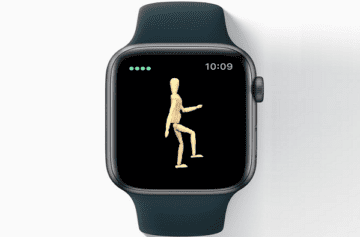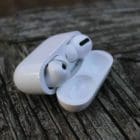The Apple Watch has been around for a few years now, and people love it for its convenience and how it can elevate everyday activities. Apple has had a step counter feature for ages now, and although there’s debate as to whether it’s accurate or not, it’s been a good way of gauging approximately how active you are. It’s only until recently, however, that you could begin to retrace your steps with the Apple Watch in case you get lost. The Backtrack feature uses GPS and the Compass app to pinpoint your exact route and help you out if you need to retrace your steps. Apple claims it developed the feature for more remote areas, such as a hiking trail, but there’s nothing stopping anyone from using it wherever they need it. If you get lost frequently, then read on to find out more about how to retrace your steps with Apple Watch.
Related Reading:
- How to Use the Depth App on Apple Watch Ultra
- How to Use Optimized Charge Limit on Apple Watch Ultra
- Best Apple Watch Ultra Bands
- Can You Use Fitness+ on iPhone Without an Apple Watch?
Contents
How to Retrace Your Steps with Apple Watch
Before you start to retrace your steps with Apple Watch, you’ll need watchOS 9. The accuracy of the Compass app may be affected by metal strap bands, so keep that in mind, too. Follow these simple steps if you want to start using the Backtrack feature:
- Open the Compass app on your Apple Watch.
- Tap the footprints icon on the bottom right hand of the screen.
- Tap start to begin recording your route.
- Allow the compass to access your Recent Locations if asked.
- If you want to begin retracing your steps, press the pause button in the bottom right hand of the screen, then press Retrace Steps.
- Your starting location will show up on the Compass with an arrow that’s pointing you in that direction. You can then begin to retrace your steps.
Other Apple Watch Exercise Features
The ability to retrace your steps with Apple Watch is part of Apple’s initiative to make the device the ultimate companion for fitness and health-related activities. Here are some other Apple Watch exercise and fitness features you may not know about:
Track Sleep
![]()
Anyone that’s tried the track sleep feature without an Apple Watch knows how incomplete the data is every night. Simply turning on Sleep Schedule on your iPhone doesn’t accurately track REM cycles and other in-depth data, so it just shows that you’ve been asleep for the whole night until you press the snooze button on your phone. An Apple Watch allows you to track in-depth data throughout the night as it tracks your heart rate, breathing, oxygen levels, and more. To track sleep on an Apple Watch, head to the Sleep app and set up your sleep schedule. From there, you can access in-depth data about your sleep on your iPhone’s Health app.
Workouts
No matter what type of exercise you’re doing, the Apple Watch Workouts app allows you to track what you’re doing and your progress. The Workout app employs all the technical features of the Apple Watch, such as GPS, heart rate monitoring, elevation, distance, and calories burned to ensure that you can gather data regarding your workouts that are as accurate as possible. You can track your progress, whether you’re going on a run, using the rowing machine, doing some HIIT, or doing yoga. You could also pair this up with Apple’s fitness service that provides you with instructional workout videos, too.
Heart Health
One of the most important things about the Apple Watch is that it can track your heart rate and notify you of any irregularities. By measuring your resting heart rate, you can find out a lot about your fitness levels and identify any potential issues regarding your heart health. There’s a dedicated Heart app on Apple Watch where you can find all the necessary details regarding the feature.










Write a Comment